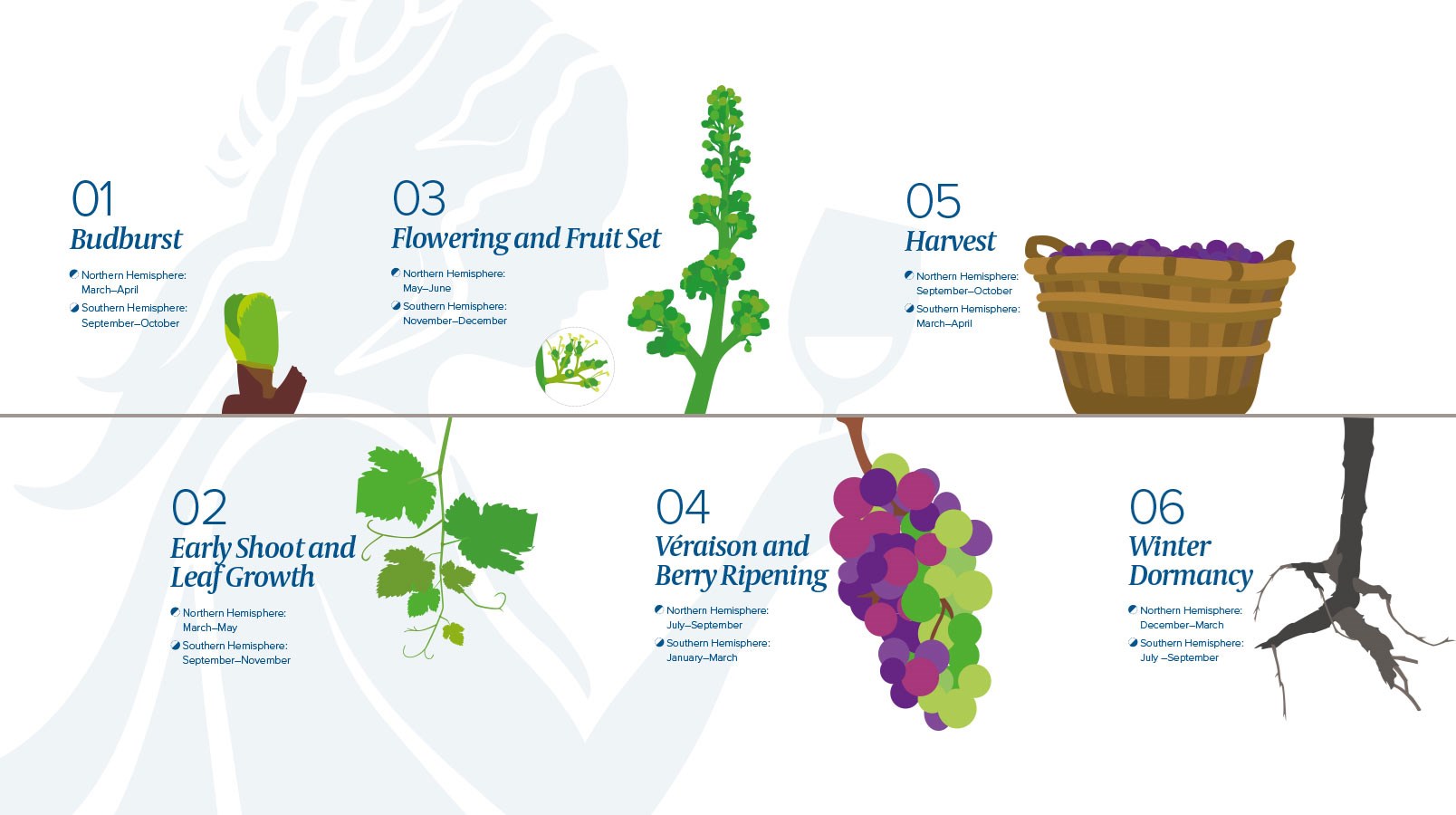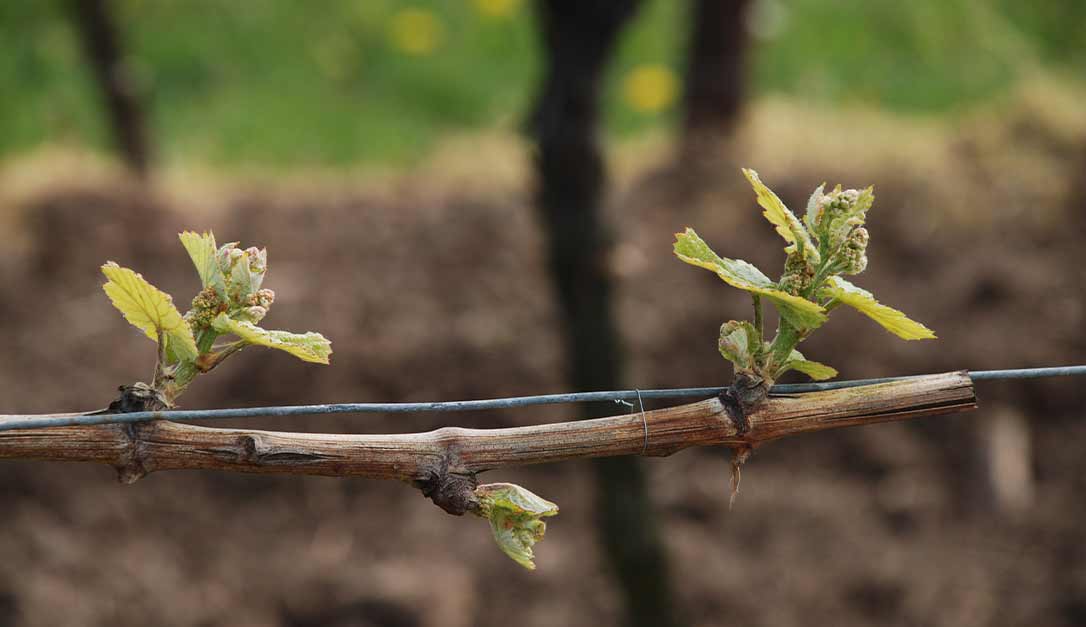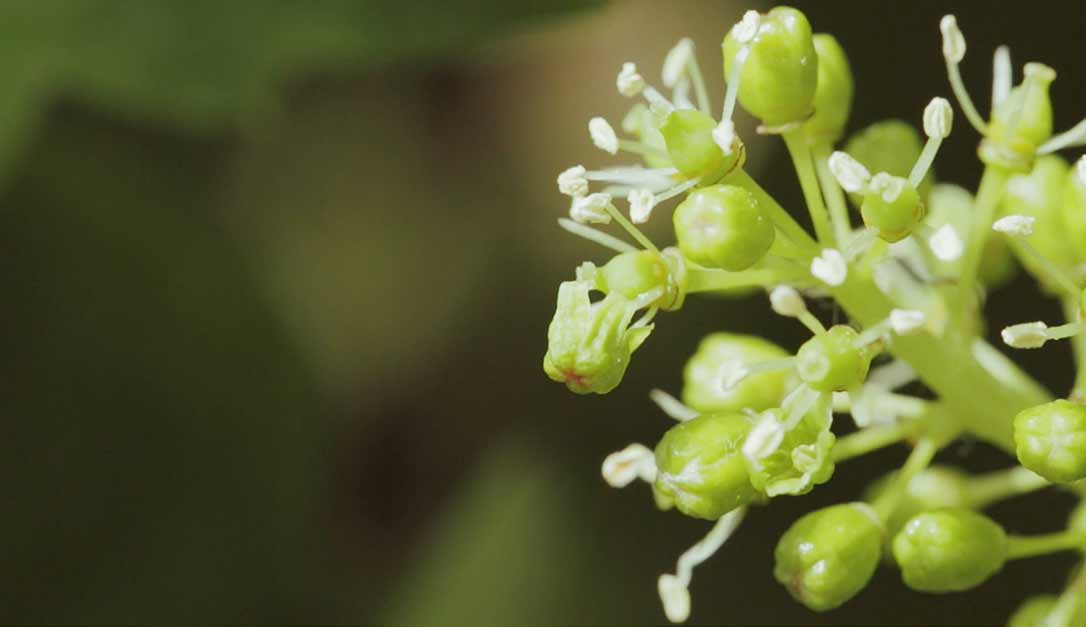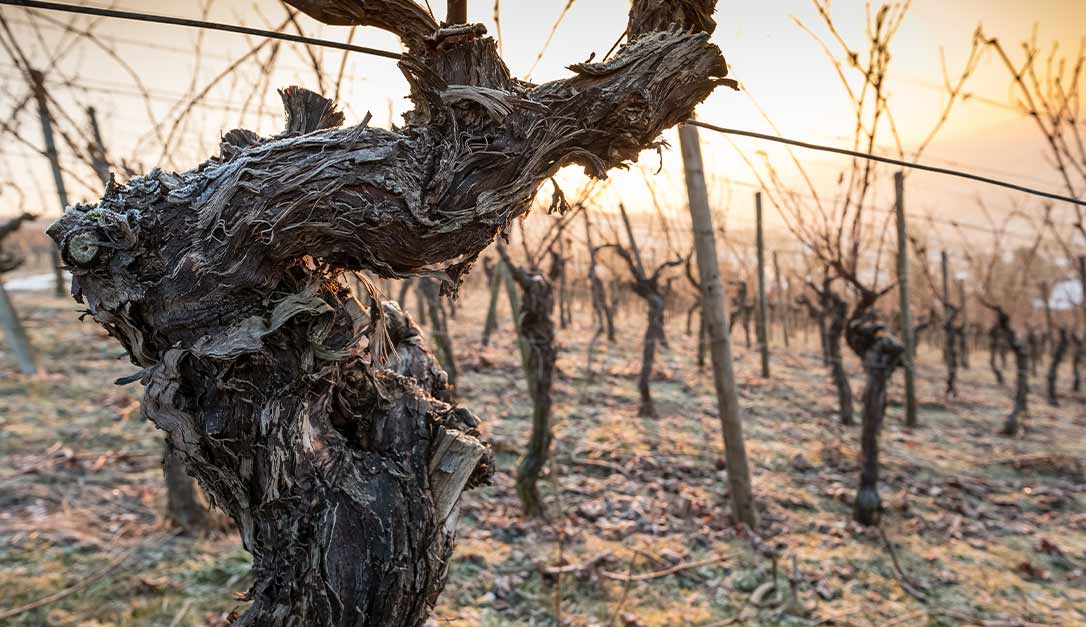If you’ve ever passed a barren-looking vineyard in midwinter, you may struggle to imagine it full of life and heavy with ripe fruit. Each year, if the conditions are right, the vine will undergo a miraculous transformation to produce those all-important juicy grape bunches used to make wine.
So, what happens in the vineyard throughout the year?
The vineyard in springtime
In the springtime, the vine wakens from its winter slumber. Little brown buds on the bare wooden parts of the vine burst open, forming tiny green shoots, much like the trees and bushes in your garden or nearest park.
As the spring weather gets warmer, a canopy of leaves starts to form as the green shoots continue to grow. If you look closely around this time you’ll see lots of tiny white flowers appearing on the vine – not the beautiful sort you’d want to display in a vase, but these unassuming flowers are nonetheless vital. Each flower that pollinates successfully is destined to become a grape.
Curious to discover more? Our internationally recognised Level 1 Award in Wines is the perfect introduction to begin your journey in wine.
When the grapes first form, they don’t look particularly appetising - in fact, they look more like peas than grapes! Like many other fruits, these little grapes will start to swell and ripen in the warmth and sunlight of the summer months. Eventually, they’ll start to change colour and begin to take on a more familiar appearance.
The vineyard in autumn
In Autumn, the grapes have ripened sufficiently to have developed the right amount of colour, flavour, acid, tannin and, importantly, sugar. Once the grapes are ripe, it’s harvest time. Grape-picking is done either by hand or by machine. Sometimes the harvest takes place at night when it’s much cooler, so the grapes are fresher when they arrive at the winery.
Vines only actually grow for about eight months of the year. In the Autumn they drop their leaves and remain dormant throughout the winter, conserving their energy for the next crop. Even a vine needs to rest at some point to keep producing its best work.
Old vines
A healthy vine can have a productive lifespan of well over fifty years, producing an incredible crop of grapes harvest after harvest.
Over the years, the vine may start to produce less fruit, but quite often the grapes produced by older vines have more concentrated flavours. You’ll sometimes see the term ‘old vine’ on a label, indicating that you can expect something powerful and flavourful in the bottle.
Related content:





